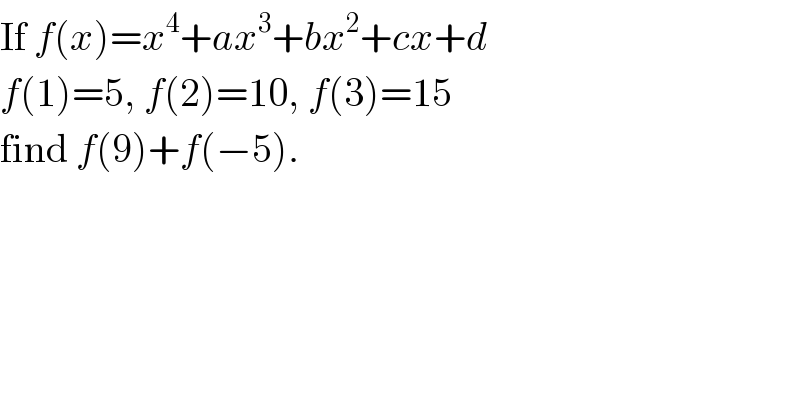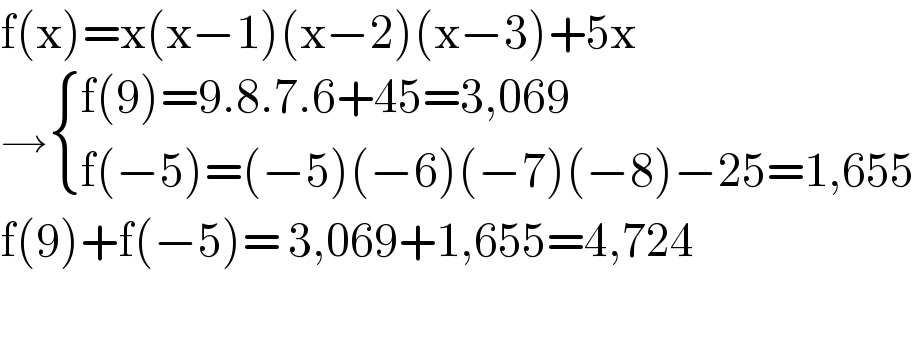Question Number 120706 by ZiYangLee last updated on 02/Nov/20

$$\mathrm{If}\:{f}\left({x}\right)={x}^{\mathrm{4}} +{ax}^{\mathrm{3}} +{bx}^{\mathrm{2}} +{cx}+{d} \\ $$$${f}\left(\mathrm{1}\right)=\mathrm{5},\:{f}\left(\mathrm{2}\right)=\mathrm{10},\:{f}\left(\mathrm{3}\right)=\mathrm{15} \\ $$$$\mathrm{find}\:{f}\left(\mathrm{9}\right)+{f}\left(−\mathrm{5}\right). \\ $$
Commented by liberty last updated on 02/Nov/20

$$\mathrm{f}\left(\mathrm{x}\right)=\mathrm{x}\left(\mathrm{x}−\mathrm{1}\right)\left(\mathrm{x}−\mathrm{2}\right)\left(\mathrm{x}−\mathrm{3}\right)+\mathrm{5x} \\ $$$$\rightarrow\begin{cases}{\mathrm{f}\left(\mathrm{9}\right)=\mathrm{9}.\mathrm{8}.\mathrm{7}.\mathrm{6}+\mathrm{45}=\mathrm{3},\mathrm{069}}\\{\mathrm{f}\left(−\mathrm{5}\right)=\left(−\mathrm{5}\right)\left(−\mathrm{6}\right)\left(−\mathrm{7}\right)\left(−\mathrm{8}\right)−\mathrm{25}=\mathrm{1},\mathrm{655}}\end{cases} \\ $$$$\mathrm{f}\left(\mathrm{9}\right)+\mathrm{f}\left(−\mathrm{5}\right)=\:\mathrm{3},\mathrm{069}+\mathrm{1},\mathrm{655}=\mathrm{4},\mathrm{724} \\ $$$$ \\ $$
